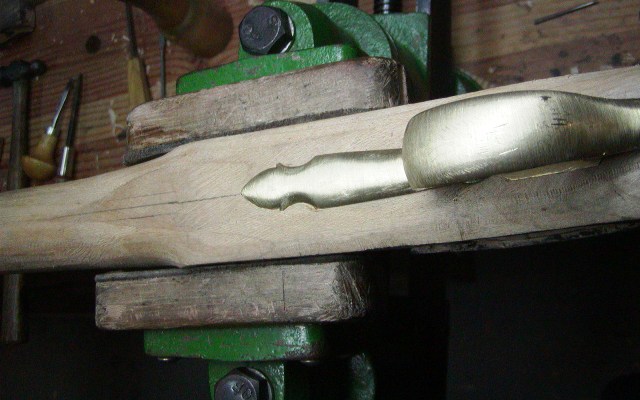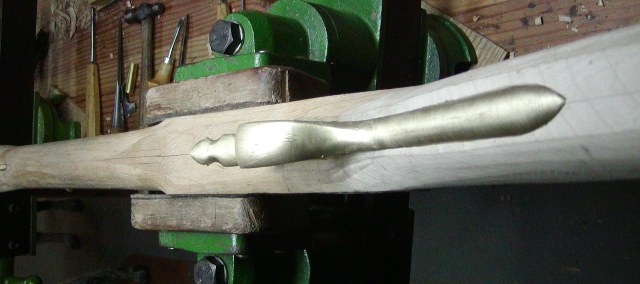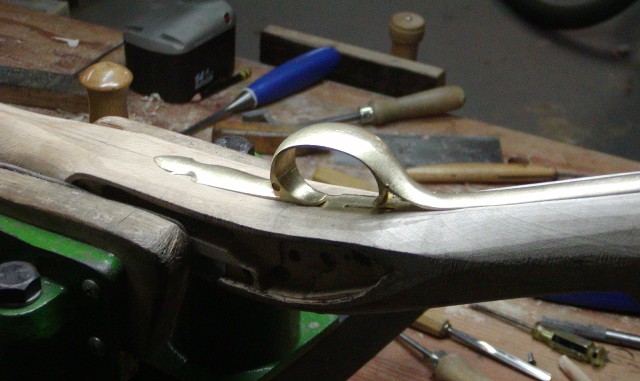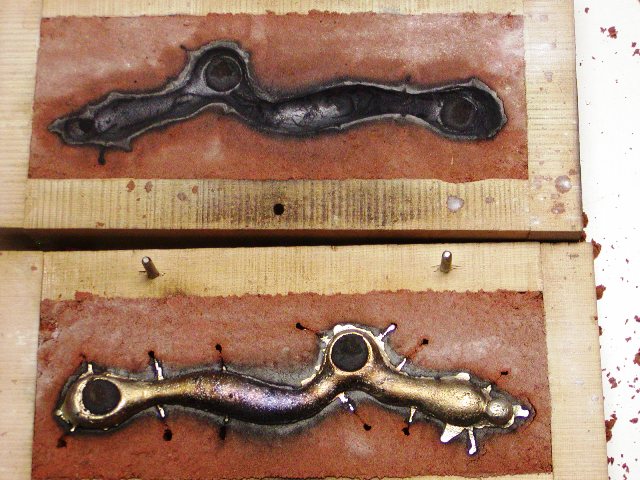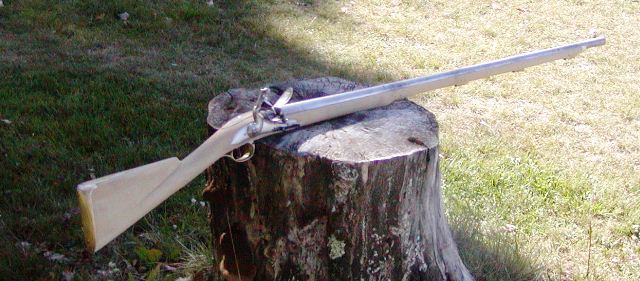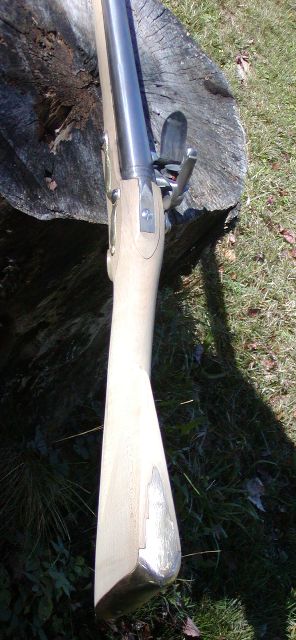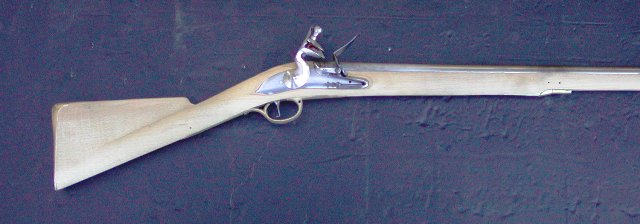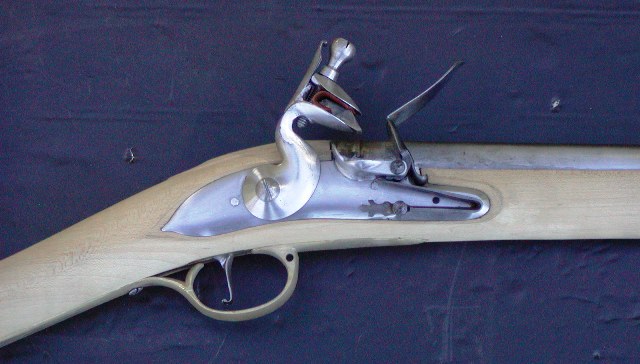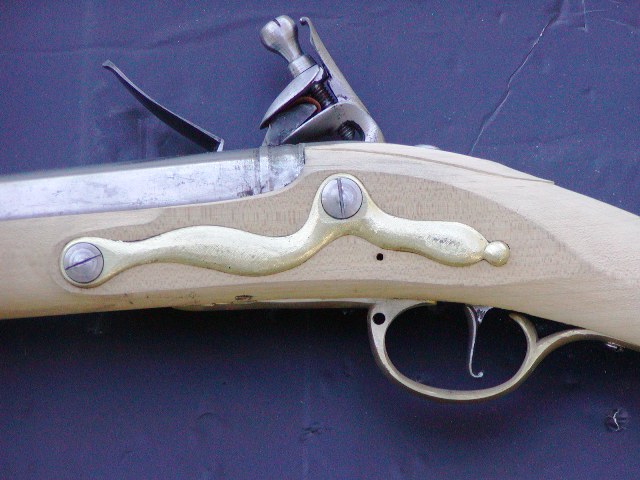- Joined
- Nov 26, 2005
- Messages
- 5,222
- Reaction score
- 10,880
Hi,
Attached are a few photos showing a militia musket I am building for a client. It represents what might be made for a NJ militia soldier just prior to the Rev War from old parts salvaged from an old British commercial musket originally purchased by New Jersey prior to the F&I war. It has a 46" 10 gauge Brown Bess barrel on which I will engrave "LONDON WILSON". I made the lock from TRS cast parts but removed all markings. I will engrave "WILSON" on it. All of the brass hardware was hand made or made by heavily modifying modern Bess castings. The gun includes upgrades to a steel ramrod, smaller ramrod thimbles, muzzlecap and a slimmer profile consistent with American-made Rev War muskets I examined in museums and collections. The stock is curly sugar maple logged in Vermont. The figure is moderate but very beautiful. The stock is still roughed out. I'll post more as I finish the gun.
dave


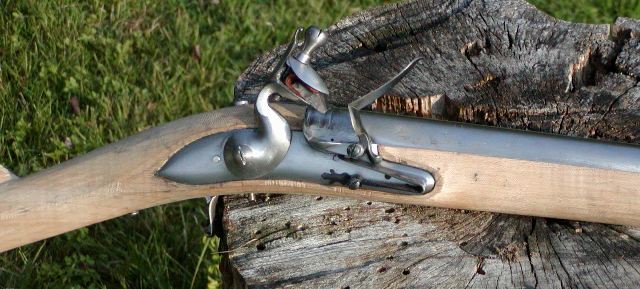

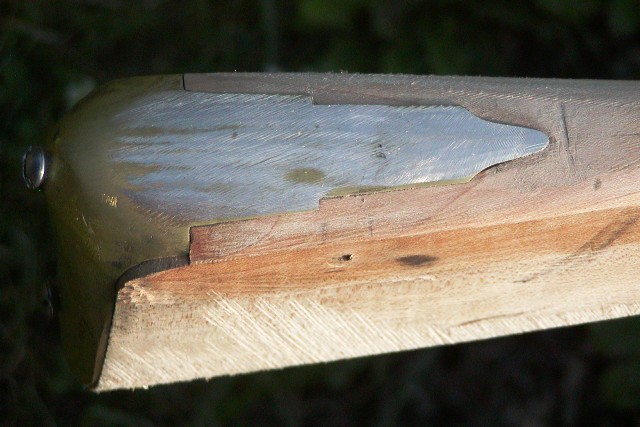
Attached are a few photos showing a militia musket I am building for a client. It represents what might be made for a NJ militia soldier just prior to the Rev War from old parts salvaged from an old British commercial musket originally purchased by New Jersey prior to the F&I war. It has a 46" 10 gauge Brown Bess barrel on which I will engrave "LONDON WILSON". I made the lock from TRS cast parts but removed all markings. I will engrave "WILSON" on it. All of the brass hardware was hand made or made by heavily modifying modern Bess castings. The gun includes upgrades to a steel ramrod, smaller ramrod thimbles, muzzlecap and a slimmer profile consistent with American-made Rev War muskets I examined in museums and collections. The stock is curly sugar maple logged in Vermont. The figure is moderate but very beautiful. The stock is still roughed out. I'll post more as I finish the gun.
dave










